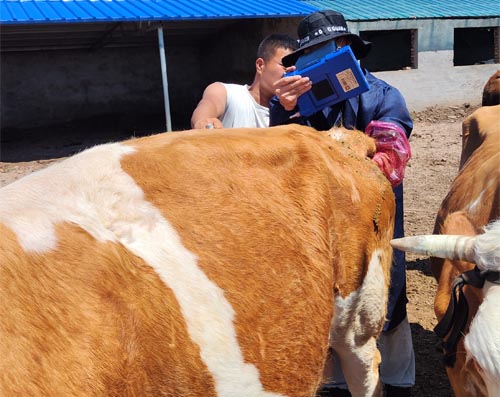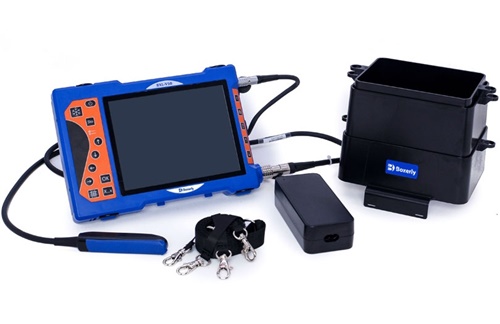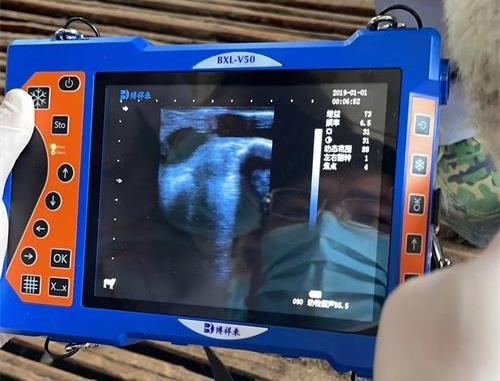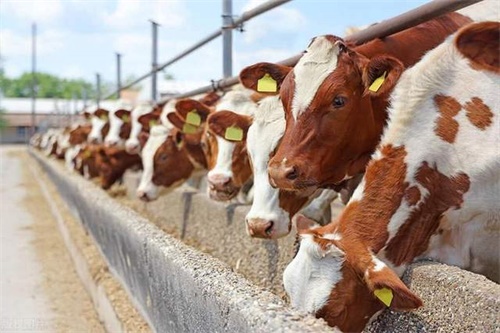Can Ultrasound Be Used for Cattle Pregnancy Detection?
Pregnancy detection is one of the most important tasks in cattle farming. Knowing whether a cow is pregnant helps farmers make better management decisions about feeding, breeding schedules, and overall herd health. Without reliable detection, farmers risk wasting time and resources on cows that are not carrying a calf. This is why veterinarians and farmers continue to look for accurate, quick, and safe methods of pregnancy detection in cattle.

Traditionally, pregnancy in cows was determined by observing behavior, physical signs, or waiting until the cow either calved or failed to show heat cycles. These approaches are not only slow but also highly unreliable. Modern technology, especially veterinary ultrasound, has transformed the way cattle pregnancy detection is carried out. But how exactly does it work, and why is it considered the gold standard today?
Common Methods of Detecting Pregnancy in Cattle
Over the years, different techniques have been used to check pregnancy status in cows. Each method has strengths and weaknesses. Let’s take a closer look at the most common ones:
| Method | How It Works | Advantages | Limitations |
|---|---|---|---|
| Observation | Watching for return of heat cycles | Non-invasive, low cost | Unreliable, very slow to confirm |
| Rectal Palpation | Manual exam through rectum | Low cost, widely available | Requires skill, risk of injury, stress for cow |
| Blood or Milk Tests | Detecting pregnancy hormones | Accurate, less invasive | Cannot give details on embryo or health |
| Ultrasound | Imaging uterus with sound waves | Accurate, early detection, visual confirmation | Needs equipment and training |
Among these, ultrasound has become the most trusted method, especially in modern cattle farming systems.
How Ultrasound Works for Cattle Pregnancy Detection
Ultrasound uses high-frequency sound waves to create an image of the uterus. A veterinarian inserts a probe into the cow’s rectum, which is placed next to the reproductive tract. This allows the machine to capture real-time images of the uterus and ovaries.
One of the biggest advantages of ultrasound is early detection. Pregnancy can be confirmed as early as 25–30 days after breeding, compared to rectal palpation, which usually requires at least 35–40 days. This time difference is critical in herd management. Early detection means non-pregnant cows can be bred again sooner, reducing the number of “open days” and increasing farm profitability.
Another strength of ultrasound is the ability to check not just if a cow is pregnant but also how the pregnancy is progressing. Veterinarians can evaluate embryo viability, twin pregnancies, and even detect problems such as fetal loss. This provides a much deeper level of reproductive management than older methods.

Benefits for Farmers and Herd Management
The practical benefits of ultrasound in cattle farming are clear. For one, it saves money. Every day a cow is open (not pregnant) costs the farmer in lost productivity. Ultrasound helps identify those cows early, so they can be rebred without wasting months of feed and care.
It also helps in planning. Farmers can separate pregnant cows from non-pregnant ones, adjust feeding programs based on gestation stage, and manage calving schedules more effectively. This is especially important in large herds, where keeping track of every cow’s reproductive status is a challenge.
In addition, ultrasound reduces uncertainty. Instead of waiting and guessing, farmers can get clear answers quickly. This makes herd management more precise and less stressful, both for the farmer and the animals.
Risks and Limitations of Ultrasound
Despite its many advantages, ultrasound is not perfect. First, it requires skilled veterinarians or trained technicians. Using the probe incorrectly can cause discomfort or even injury to the cow. Second, the machines, while becoming more affordable, still represent a significant investment compared to simple palpation or blood tests.
Another limitation is that ultrasound cannot fully replace good herd management practices. It is a tool, not a solution on its own. Farmers still need to maintain proper breeding records, manage nutrition, and monitor cow behavior to get the best results from pregnancy detection.
That said, when used properly, ultrasound remains one of the safest and most accurate tools available.

The Future of Cattle Pregnancy Detection
Technology continues to evolve. Portable ultrasound machines are now lighter, more durable, and easier to use in the field. Some models even connect wirelessly to tablets or smart glasses, allowing veterinarians to keep their hands free during exams.
Beyond ultrasound, researchers are exploring advanced hormone tests, biosensors, and AI-assisted imaging to further improve detection accuracy. However, ultrasound remains the backbone of reproductive management in cattle today, and its role is unlikely to be replaced soon.
Conclusion: Ultrasound as the Gold Standard
So, can ultrasound be used for cattle pregnancy detection? The answer is a strong yes. Among all available methods, it offers the best balance of accuracy, speed, and information. Farmers who use ultrasound can detect pregnancy early, plan better, and improve overall herd productivity.
While there are costs and training involved, the benefits far outweigh the drawbacks. For modern cattle farming, ultrasound is not just a helpful tool—it has become a vital part of reproductive management.





